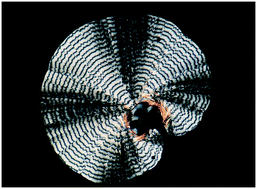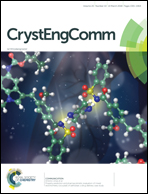l-Malic acid crystallization: polymorphism, semi-spherulites, twisting, and polarity†
Abstract
L-Malic acid (LMA) is a commodity chemical that was first isolated in the crystalline form in the 18th century, yet it has been troublesome for more than 100 years because of its resistance to forming crystals that are suitable for optical or X-ray analysis. LMA crystallizations from the melt and from solutions are reevaluated here. Indeed, LMA crystallizes poorly from water. However, a flowable solid was produced by growth from ethyl acetate at room temperature to give large well-formed trapezoidal prisms of a new LMA polymorph, form II (space group P21, a = 5.7343(6) Å, b = 6.7990(7) Å, c = 6.9949(7) Å, β = 104.9610(10)°, V = 263.47(5) Å3, Z = 2). The growth of LMA from ethyl acetate at 4 °C produced hard, near-spherical aggregates of the only previously known phase, which also crystallizes in the space group P21 (form I). From the melt, LMA produces spherulites with helicoidal twisting of its individual fibrils. Polycrystalline ensembles are shown to arise from the inequivalent branching of the ends of a polar crystal which adopt semi-spherulitic morphologies as crystallization intermediates. Tailor-made additives were used to assign the absolute growth direction of the polar spherulite radii as +b.

- This article is part of the themed collections: Editor’s Collection: Polymorphism in Molecular Crystals and CrystEngComm 20th volume collection


 Please wait while we load your content...
Please wait while we load your content...